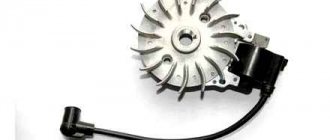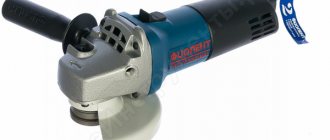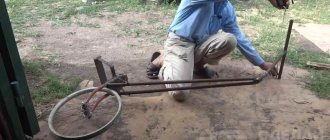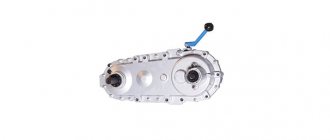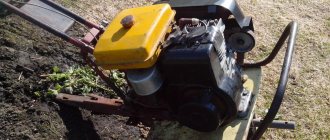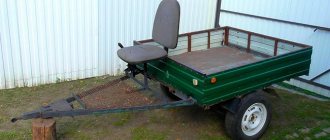Huggies Diapers Elite Soft 8-14 kg (size 4) 66 pcs
1099 ₽ More details
Huggies Diapers Elite Soft 5-9 kg (size 3) 80 pcs
1099 ₽ More details
Radio stations
Two-wheeled, mechanical devices of this type, such as a walk-behind tractor or cultivator, are in great demand among farmers, gardeners and cultivators. They minimize human physical labor and help cultivate the soil, remove grass or snow, and transport small loads.
Like any other mechanical unit, a walk-behind tractor can fail and cause a lot of inconvenience to the owner. Careful care of the device and following all operating rules specified in the instructions for use can minimize the likelihood of breakdown. However, no matter how high-quality the walk-behind tractor is, there are parts and elements that become unusable before others. And such an element is the engine.
The walk-behind tractor fails for certain reasons
Why does the walk-behind tractor stall under load?
The problem when the walk-behind tractor operates with periodic stalls and does not develop speed is perhaps the most common among gasoline and diesel units. If the walk-behind tractor starts and stalls, the main reasons for this phenomenon should be sought in the fuel supply and ignition systems, malfunctions of which may appear after 5 minutes of operation.
If the walk-behind tractor does not develop speed and stalls spontaneously, you need to check:
- aerofilter - if it becomes clogged, its surface is cleaned, washed or blown with a vacuum cleaner.
- quality of refueled fuel;
- ignition system - its diagnosis begins with a spark plug, the external condition of which is used to judge the functionality of the ignition.
In addition to the spark plug, other ignition failures of the walk-behind tractor are:
Read also: Minecraft crashes, what to do
- incorrect gap between electrodes;
- mechanical damage to the electrical circuit;
- unadjusted angle between the magnetic part and the coil.
Repairing them yourself is allowed if this is provided for in the user manual for a specific walk-behind tractor model;
- muffler - the engine stalls during operation and does not develop speed due to a clogged muffler. To free it from combustion products, it is soaked in water with detergents and, after washing, dried;
- carburetor, the settings of which may be incorrect;
- cylinder-piston parts, due to which the engine does not develop speed under load. This can only be checked with a compression gauge.
It also happens that the cultivator suddenly stalls when tilted in both directions or only to the left or right. Most often this occurs due to insufficient oil level. At the moment of tilt, the lubricant remaining sensor in the crankcase may be triggered, which automatically blocks the motor.
What breakdowns can cause engine failure?
There are other breakdowns that make it impossible to start the engine in winter. Among them, the following stand out:
- gasoline that was not drained from the tank for the summer;
- the throttle valve is in the wrong position;
- cheap motor oil is used;
- the carburetor does not work;
- problem with the ignition system.
Gasoline that remains in the fuel tank after several months of inactivity is no longer usable, so the snow blower will not work on it. The octane number drops, all the necessary additives evaporate. The problem can be solved very simply: you need to change the fuel, to do this, drain the old one and fill it with new one.
Each instruction for starting the equipment indicates in what position the throttle valve should be. If this condition is not met by the user, then it is also impossible to get the motor to work, since there is no required air flow. Even if the equipment starts, engine failure is not far off, since it begins to experience a load several times higher.
Poor quality oil is also the reason why the engine not only does not start, but can also fail. As a result, expensive repairs will be required in the future, since the main elements work with great frictional force, and without lubrication they simply wear out.
If none of the above is observed, then you should check the contacts. A break in the wiring or an incorrect gap at the coil leads to the absence of the necessary spark, and accordingly, ignition of the combustible mixture also does not occur.
We must not forget about the carburetor - one of the most important components in the design of a snow blower. He is responsible for supplying and preparing the combustible mixture. It is necessary to regularly clean the unit from carbon deposits and prevent dust from accumulating in it.
For information on how to properly start a snow blower, see below.
How to start a snow blower? For many, the question will seem strange, because there is nothing easier than following the instructions that come with the purchased equipment. Buyers do exactly the opposite. First they try to start the car, they break it, then they fix it. To avoid such incidents, let's figure out how to start a snow blower.
Why does a walk-behind tractor engine have difficulty starting when hot?
The equipment may stall when heated. This problem can be resolved relatively easily. This is often caused by too much air being supplied to the carburetor. It is mixed with gasoline and motor oil and acts as a carburetor coolant. So the temperature of the latter is much lower than the temperature of the walk-behind tractor engine.
To resolve the difficulty, you need to follow a certain method. It's important to start the engine. To do this, the following actions are performed:
- When starting the engine, the throttle trigger is squeezed halfway;
- You should not press the gas trigger often, as this may cause the engine to flood;
- After starting the engine with the throttle trigger pressed halfway, it is necessary to release the throttle thoroughly. Afterwards you can continue working.
Light actions will prevent an increase in the load on the heated engine, the main elements and systems are not subject to increased wear. The listed methods will allow you to eliminate any malfunctions with the unit. They are equally effective for owners of the following brands: Agro, Honda, Neva, Cascade.
Adjusting the walk-behind tractor carburetor
Instability of the cylinder block indicates the need for carburetor adjustment. The need to perform this procedure usually arises before the start of the growing season, when the equipment has not been used for a long time, or after it, when the walk-behind tractor has been subjected to significant loads for a long period. The engine must be warmed up before adjustments begin. The actual workflow looks like this:
- The screws that adjust low and high throttle are fully tightened and then backed out about one and a half turns.
- The engine starts and warms up for about 10 minutes.
- The lever controlling the power unit must be set to the minimum position, but the engine must not stop.
- The throttle control screw will help you adjust the minimum idle speed so that the engine runs stably, without any extraneous noise or stalling.
- The rotation of the screws allows you to accurately determine the amount of combustible mixture entering the engine.
- Tightening the propeller helps enrich the mixture, and unscrewing it, on the contrary, increases the volume of air entering the engine;
READ How to Assemble a Milling Cutter on a Motoblock Video
Use the idle screw to adjust the maximum idle speed. The same should be done at minimum speed using the screw locking screw. The essence of this adjustment is that the valve screw allows you to adjust the angle at which it is closed;
The lever responsible for controlling the engine must be moved to the “gas” position. If the operation of the walk-behind tractor still cannot be called stable, the full radiation screw is adjusted to achieve an ideal stroke. However, the maximum permissible propeller speed is 2.5.
The accuracy of carburetor adjustment can also be determined by how the spark plug looks after a short period of operation under load. If the working mixture is ideal, the spark plug will not leave soot or traces of fuel, which indicate that the fuel mixture is too lean or, conversely, too rich. It should be noted that carbon deposits or traces of fuel on the spark plug may indicate not only an incorrect setting, but also more serious problems with the walk-behind tractor, including a faulty ignition or cooling system. Adjusting the care of track valves
The main problems of the walk-behind tractor engine
It is impossible to give an answer to such a seemingly simple question offhand. There are many reasons why the walk-behind tractor becomes capricious and stalls during operation. Conventionally, they can be divided into several groups:
- problems with fuel supply;
- malfunction of the engine starting system;
- control and automation malfunctions;
- problems with the muffler, cooling, etc.
If you notice problems in the operation of the walk-behind tractor, then the main thing you must understand is that there are problems that you can easily fix with your own hands, even if you are not particularly versed in technology, and there are situations when it is impossible to do without a competent specialist and appropriate equipment. The most important task for you, as the owner, is to quickly and correctly determine why your walk-behind tractor is stalling and make the right decision.
Read also: Why does a child scratch his nose?
Malfunctions of different types of walk-behind tractors
Today, many companies produce various types of walk-behind tractors.
Let's look at some of the most popular models and get acquainted with their common problems.
- "Belarus-09N" / "MTZ" is a heavy and powerful unit. Most often, its owners have to repair the clutch. Often the gear shift system is also “lame”.
- “Ugra” is a Russian motorcycle with a power take-off shaft. It is characterized by a number of design flaws, which cause problems with oil leakage and unpleasant vibrations. You may even encounter a failure of unit control.
- Equipment from Chinese manufacturers, for example, the Garden Scout GS 101DE model, often experiences rapid wear of important parts. What makes the situation worse is that the service for Chinese walk-behind tractors is rather poorly developed.
Engine power has dropped
It often happens that a previously serviceable walk-behind tractor, which has served for several years, suddenly loses power.
– If the power has dropped after a long period of storage
, perhaps the walk-behind tractor was stored with a wet carburetor and fuel system, which led to boiling. In this case, you can start the engine and let it run, often after these actions the power is restored. If you have the skills, you can disassemble and clean it; if you don’t have the skills, it’s better to contact the service.
– The carburetor may be clogged
. Clean
– Fuel hose is clogged
. Need to blow it out.
– Possible loss of functionality of the crankcase cuff
. Remove the casing and gearbox cover and inspect the cuff.
Doesn't develop speed
If the engine is in good working order, but the walk-behind tractor does not develop speed, then it is possible:
- the air filter is clogged. As a result, not all the air enters the carburetor, and the fuel becomes oversaturated;
- low quality fuel fluid;
- parts of the ignition system have failed. As mentioned earlier, it is necessary to check the spark plug, correct the gap between the electrodes, and pay attention to the mechanical integrity of the electrical circuit;
- if necessary, clean the carburetor and adjust it correctly;
- the operation of pistons and cylinders is interconnected with engine power.
Therefore, pay attention to the condition of the pistons and cylinders. Their external damage can significantly reduce the compression value.
For example, cleaning the carburetor may solve the problem
How does it work?
To understand breakdowns and fix them, it is important to understand how everything works in a normal situation. For greater simplicity, we will focus only on models with internal combustion engines. Previously, there were two-stroke walk-behind tractors, but now they are increasingly being replaced by four-stroke analogues.
The traditional approach involves the use of a gear transmission. Despite a decent level of reliability, this device takes up a lot of space. The force is transmitted using either a cone or a cylinder. Light walk-behind tractors are mainly equipped with a worm-gear transmission. A typical operating principle of a walk-behind tractor controller contains:
- a device that monitors the number of revolutions;
- a rod connecting this device to the throttle valve;
- spring.
The control unit operates on the basis of pneumatic or mechanical connection. “Pneumatic” means the presence of a kind of wing that reacts to the speed of the air flow. Centrifugal options involve placing a special camshaft inside the crankcase.
Why does the walk-behind tractor shoot into the muffler?
Often, if the engine system malfunctions, the walk-behind tractor not only does not develop speed, but also produces obvious, ear-piercing sounds emanating from the muffler. After this, it smokes and stalls, which clearly causes concern to users.
The cause of this problem may be:
- excessive intake of oil into gasoline or diesel, due to which its combustion is accompanied by the release of unnaturally acrid smoke. In this case, the repair consists only of cleaning the fuel system and refueling with high-quality fuel;
- failure to adjust the ignition or failure of its components - first of all, pay attention to the gap between the electrodes and, if necessary, set it in accordance with the operating instructions;
- incomplete combustion of fuel in the engine cylinder. In this case, repair of the walk-behind tractor engine begins with disassembling the entire cylinder-piston group, which is cleaned and checked for defects. It must be remembered that after such manipulations it will not be superfluous to reconfigure the carburetor.
How to start a walk-behind tractor
The algorithm for starting the Neva walk-behind tractor is as follows. Before each use of the unit, it is necessary to check the oil level in the engine, if the amount is insufficient, the most expensive part of the cultivator can quickly become unusable.
If the oil was filled a long time ago, it may deteriorate and also lead to engine failure. Some engine manufacturers, including Lon Chin, Subaru, install a sensor for the quality and quantity of oil poured into their devices, so such a check is not needed here - the electronics will do everything for you.
The next step is to add fuel, the type of which should be clarified from the operating instructions for the specific cultivator model.
For two-stroke engines, oil and fuel are poured into 1 tank, but in a certain proportion, which is indicated on the oil bottle.
Next, you should inspect the unit from all sides and check the fastening of the main mechanisms. These listed actions can be considered a preparatory stage when starting any cultivator, without exception. Now you can proceed to directly starting the engine.
But here the differences in actions begin, and everything will depend on what fuel the engine runs on:
- On gasoline. You should set the fuel choke lever to the “Start/Run” position, open the tap and turn off the ignition. You need to operate the recoil starter several times, then turn on the ignition and pull the starter. The engine starts, and the position of the lever should be switched to the “Operation” mode. Some models of cultivators are equipped with an electric starter - to start the engine you only need to turn on the ignition and start the device.
- On diesel. Due to the property of this type of fuel to freeze in cold weather, the first step is to warm up the unit. When using a motor cultivator for the first time after purchase, you should pull the starter several times or unscrew the fuel supply valve and each fuel supply mechanism. When opening the tap, wait until the fuel drains, screw it back on and proceed to the next connection until you reach the nozzle. You can open all the taps and put the lever in the middle position. Next, you should take the decompressor, press it and pump it several times. After this, you need to let go and pull again until it returns to its original state. All that remains is to press the decompressor and the starter. After these simple steps, the engine will start.
When purchasing a walk-behind tractor, the sales consultant must explain to you in detail how to start the selected unit. Before using the equipment on your site, carefully read the operating instructions for the walk-behind tractor. If you follow all the manufacturer's recommendations, the unit will last a long time.
Some craftsmen are able to start a walk-behind tractor without a starter (used when it fails). To do this, remove it, then thread a tight rope with a knot at the end into the hole in the rim located behind it and wind it 4 times around this part of the walk-behind tractor. Next, pull the resulting piston up and turn off the decompressor.
Subtleties of using a walk-behind tractor after the winter break:
- The first thing you need to do is check the gas tank. For proper winter storage, the tank should be completely filled with gasoline, which is drained in the spring, and then fresh fuel is added.
- If the tank has remained empty all winter, then there is a high probability of dirt and rust forming in it, to remove which the contents of the tank are drained, the tank itself is removed, washed and returned to its original place.
- Air filter. It must be removed and cleaned in accordance with the operating instructions.
- Carburetor. Unscrew the drain plugs on it, from which the remaining fuel should flow. After finishing the draining, screw in the plugs.
- The same procedure must be carried out with the fuel tap. If it is clear that gasoline is flowing into these mechanisms, then the leak should be eliminated.
- Engine oil dipstick. It should be pulled out and wiped with a rag, after which you need to put the dipstick back and unscrew it again. Using it you need to determine the presence of oil, which should be no less than the top mark on the dipstick. If the oil level is lower, add the required amount. In addition to the oil level in the engine, it is necessary to evaluate its quality. If it looks like a black slurry and has a rather unpleasant burning smell, then it should be drained completely and a new one filled in.
- Next, how to tighten the belt on a walk-behind tractor. You should move on to the drive belt, namely, its tension roller. Its tension must be checked in this way: first release the control lever (the roller must also be released, without the need to pinch the belt), and then pull out the lever (the roller tensions the belt). If the roller tension is incorrect, the rod should be thrown over the links of the adjusting chain.
- Next in line is the main gearbox, in which you should check the oil level by inserting a regular wire into it. The amount of oil should be as specified in the instructions for the walk-behind tractor.
- Wheels and cutters. Examine their stoppers - if the quality is poor, they should be replaced.
Now the engine starts, and it should be warmed up with good gas for 3-5 minutes. But here some problems may arise.
Why does the walk-behind tractor work intermittently?
Among other typical malfunctions of a walk-behind tractor, a number of such breakdowns can also be identified:
- The engine of the unit backfires - this indicates the use of low-quality fuel to refuel the unit. In this case, you will have to not only replace the fuel, but also thoroughly rinse the fuel pump and fuel supply hoses;
- The walk-behind tractor operates jerkily - the reason for this lies in insufficient warming up of the engine. Be sure to turn off the engine, wait for it to cool completely, and start the engine again, giving it at least 10 minutes to warm up completely;
- The motor of the walk-behind tractor does not noticeably pull, the engine power has decreased - in this case, you need to check and, if necessary, clean the air and fuel filters. Another reason for this breakdown lies in the wear of the magneto of the ignition system. It is best to replace the part immediately without attempting to restore it.
Unusual causes of blue smoke
Sometimes a situation arises when blue smoke comes from the exhaust pipe of a new car. Most often this happens when the engine warms up, and after it warms up, the smoke disappears. The reason for the phenomenon in this case is that the parts of the new engine have not yet gotten used to each other.
The reason for the smoking of diesel and turbine engines
If your car's engine is equipped with a turbine, then there may be another reason for blue smoke coming out of the exhaust pipe. In particular, it most likely consists of wear on the compressor rotor seals and bearings. If the turbine seal is damaged, diagnostics is complicated by the fact that the oil enters the exhaust system, where it burns out.
If your car has an automatic transmission (automatic transmission), then smoke with a bluish tint may occur due to a malfunction of the membrane of its regulator if there is a vacuum load sensor. In this case, the malfunction can be diagnosed by significant carbon deposits on the spark plugs.
There are also a number of more serious breakdowns that are even easier to diagnose. In particular:
- Breakage of the bridges between the rings on the pistons or the rings themselves. As a rule, this occurs due to detonation.
- If the engine is very overheated, deformation of the piston skirts may occur. Because of this, a large gap appears between the piston and cylinder. And oil can penetrate it with the ensuing consequences.
- Connecting rod deformation. This situation can arise, for example, from a water hammer or when a belt breaks and the piston hits a valve that was not closed at that moment.
- If low-quality oil is used, the rings may burn or stick in the piston grooves.
- Also, the rings can be rolled in the same grooves due to the long glow ignition. In this case, they are completely immobilized.
Typically, the defects described above do not occur in all cylinders, but only in one or several. The easiest way to start diagnostics is by assessing the condition of the spark plugs, as well as measuring the compression level.
The walk-behind tractor does not develop speed: the reason
Auto mechanic, specializes in agricultural equipment
Two-wheeled, mechanical devices of this type, such as a walk-behind tractor or cultivator, are in great demand among farmers, gardeners and cultivators. They minimize human physical labor and help cultivate the soil, remove grass or snow, and transport small loads.
Like any other mechanical unit, a walk-behind tractor can fail and cause a lot of inconvenience to the owner. Careful care of the device and following all operating rules specified in the instructions for use can minimize the likelihood of breakdown. However, no matter how high-quality the walk-behind tractor is, there are parts and elements that become unusable before others. And such an element is the engine.
The walk-behind tractor fails for certain reasons
Preparing the walk-behind tractor for start-up
Difficulties with starting the engine can appear not only in used walk-behind tractors and cultivators, but also in new ones just purchased at the shopping center. For this reason, before starting a mini-tractor for the first time, you should read its instructions, then carefully examine all connections and, of course, check the oil level in the internal combustion engine.
You should study the annotation compiled by the manufacturer in order to find out what operating speed the engine has: four-stroke or two-stroke. This is important to understand, since modifications with a two-stroke engine (like the Mole cultivator) require a special combustible mixture, consisting of a mixture of fuel and oil in a special proportion.
Due to the mismatch of fuel, the special equipment will make noise, and the spark plugs and fuel line may also be damaged, which can lead to fuel pump failure, and this is a direct path to expensive repairs at a service station. You can determine whether the fuel is suitable for the motorcycle by the smoke that appears. If the quality of the fuel is poor, it will have a white tone, as happens when the car is tilted too much.
Fuel quality is also important for a diesel walk-behind tractor. It does not start in winter - or it starts, but soon freezes - if summer diesel fuel is poured into its engine, since at low temperatures it begins to thicken and clog the fuel line.
The start-up of motor vehicles both in the summer and in the winter must be carried out in the established order. For example, to start a Krot brand motor cultivator, the following procedure is carried out:
- open the gas tap;
- set the suction motor to the “Choke” state;
- turn off the ignition and turn the engine several times with a manual starter;
- start the motor again and move the motor to the “Run” state.
Conditions often arise when the power apparatus starts up easily, but after a couple of seconds it freezes. In this case, you should check the permeability of the sump. If the reason is that the tap is clogged, then clean it with gasoline.
Starting a motorcycle with a diesel engine will be somewhat more difficult. Starting a diesel engine begins with “de-airing” the fuel path, that is, by ridding it of air accumulations. For this:
- open the fuel supply valve;
- untwist the connections of the outlet channel until fuel appears;
- twist the connections and blow through all the nozzles.
If after the operations the motor does not function properly, and the special equipment begins to smoke, then the reason is the old lubricant, and it must be completely changed. The unit does not start due to insufficient volume of oil fluid, so do not forget to control this parameter.
Starting a motor cultivator after winter or prolonged downtime also has its own nuances. In order to bring the unit into working position, perform the following manipulations:
- open the gas tap;
- check whether the power is turned on;
- check the presence of lubricant;
- let the gas reach about half way.
Before putting the motorcycle into operation, all connections are checked, including transmission sections, clutch, starting mechanisms, and, if necessary, they are adjusted.
Replacement and adjustment
Quite often, unfortunately, there is a need to completely change the motor on a walk-behind tractor. When choosing a replacement device, it is recommended to give preference to products from well-known companies. Traditional prejudices about products from Chinese factories have long become irrelevant.
Even if there is no talk of a complete replacement, it is important to know how to adjust the engine of agricultural machinery. It is advisable to begin disassembly only after flushing the engine and removing oil from it. Lubricant is poured only when the engine is warmed up after a short run. Next it's time to remove the fuel tank. Sequentially remove:
- fuel supply hose;
- air filter;
- screen covering the cylinder.
Then remove the crankshaft pulley. Following the pulley, it is necessary to remove the fan, reflectors, and insulating flywheel casings. Unscrew the cover, removing the rings and coupling bodies. When the washer is removed, you can press out the flywheel using a wooden block.
Now, having dealt with the flywheel, remove the cylinder cover, camshaft and pusher. Once access to the connecting rod is gained, remove the oil sprayer and locknut. After repairing and replacing damaged parts, reassemble the engine in the reverse order. You should familiarize yourself with the diagram in advance, then there will be no errors.
Replacing damaged valves for a gasoline walk-behind tractor occurs after removing:
- gasoline tank;
- the head of the cylinder block;
- carburetor;
- muffler;
- boxes.
Often there is a need to replace rings. But this should only be done in the process of more serious repairs. An isolated change of rings in itself is irrational both economically and technically. Additionally, a high quality ring group will usually have the same lifespan as a cylinder. They are changed at the same time.
Installation with an elastic band is advisable if a Chinese motor is installed on domestic walk-behind tractors. Rubber cushions are often used as a platform. They can be used as parts of the front shock absorber from a classic car. Along with the need to rearrange individual parts of the walk-behind tractor engine, many people have a need to install an electric starter themselves. This starter will have to be properly connected to the battery.
The crown is attached only to the removed flywheels. First remove all interfering parts of the motor. To remove the flywheel, in many cases you cannot do without a special key. A generator and its magnets are installed in the flywheel assembly. When the terminals and contacts of the battery are aligned, you should conduct a test run of the walk-behind tractor.
Other common engine starting problems
What to do if the walk-behind tractor engine operates intermittently and does not develop the required power? There may be several reasons for this behavior:
- Air filter clogged.
Air does not enter the carburetor, which means the fuel does not burn well - the filter will have to be cleaned or replaced.
- Muffler clogged.
Residues of fuel, as well as the products of its combustion, form a thick coating on the internal walls of the muffler, which must be removed.
- Carburetor clogged.
In this case, the assembly will have to be removed, disassembled and all its components properly cleaned. After this, the carburetor must be assembled and adjusted correctly.
- Wear of the cylinder-piston group.
Temperature and high loads take their toll, and even the strongest metal wears out and deforms over time. Such parts should be replaced immediately, otherwise you may pay for it with irreparable damage to the engine itself.
- Broken ratchet housing or ratchet
The presence of this problem is indicated by the absence of crankshaft movement when starting the engine. To replace the clutch housing and ratchet, you will have to completely disassemble the starting unit.
- Loosening the screws securing the starter housing to the engine housing.
https://www.youtube.com/watch?v=CWQH1WdC8Vk
If the starter cord does not return to its original position, the starter needs to be adjusted. To do this, the screws are loosened, and the position of the knot is set by hand so as to ensure normal return of the cord.
- Broken starter spring.
A fairly common reason for the starter cord not returning is the failure of the starter spring - it will have to be replaced.
Competent maintenance of its main units and components significantly increases the service life of any equipment. Efficiency of replacement of worn-out spare parts is also of great importance. Therefore, if the slightest failures or malfunctions occur, they should be addressed immediately - in the end, this will prevent much more serious and expensive problems.
What to do if the cylinder block engine does not start?
If the walk-behind tractor does not have hot turns, fault diagnosis is carried out in the following sequence:
- After several unsuccessful starting attempts, inspect the spark plug as described above. If possible, it is better to replace it with a new one immediately to completely eliminate the problem from now on;
- Check the compression and vacuum levels in the gas tank;
- In a dark room to see if the wiring is sparking;
- Make sure a spark forms when heated. In addition to the spark plug, a faulty ignition coil can also prevent sparks.
Other reasons for refusal include:
- Lack or incorrect filling of oil, due to which the triggered level sensor blocks the operation of the engine part;
- Failure of the valve in the fuel tank, which is supposed to maintain gasoline pressure. As a result, its liquid content does not enter the carburetor.
Repairing chassis, especially their powertrain, is a demanding business that requires literacy and good dexterity. This applies not only to domestic favorites. Motoblocks Grass, Cascade, Agro, but also imported ones, for example, Honda. But this does not mean that repairing them yourself is impossible. With minimal knowledge and following our recommendations above, you can solve any problems at home.
Motoblock. This is a useful economic unit that greatly simplifies land and home operations. Like any other piece of equipment, units can break. But it is quite possible to repair a walk-behind tractor engine with your own hands, following simple recommendations.
DIY walk-behind tractor repair
Unfortunately, it doesn’t matter what kind of equipment breaks down from time to time, so its owner needs to be able to troubleshoot problems on his own. Obviously, if the car is under warranty, it is better to take it to a service center, where specialists will carry out warranty repairs free of charge.
Often, damage to a cultivator or walk-behind tractor occurs due to improper operation - when they fill in bad fuel, allow huge loads, or do not replenish the loss of lubricating water in time. Then the car begins to stall, stall, pick up speed poorly (especially if it has an electric motor), or even stops starting altogether. But, knowing the structure of the unit and the principle of operation of its devices, you can identify the cause of the damage yourself and carry out repairs perfectly.
Carburetor Maintenance
The performance of the equipment depends on regular maintenance of the dosing unit. Its components are very sensitive to the quality of fuel and do not tolerate dirt. The main task of mechanics is to adjust idle speed. Secondary – cleaning of external and internal surfaces.
Most often, calibration jets become dirty. This occurs due to foreign substances entering the fuel system. They can be found both in gasoline and in the air entering inside. Replacing filters will help reduce the risk of contamination of the dosing device. Moving parts fail due to abrasion.
If “floating” speeds appear in the operation of the walk-behind tractor, dips in torque, or the unit begins to start intermittently, then it’s time to adjust the carburetor. By increasing the crankshaft rotation speed, the appearance of low idle speeds is “treated”. This is done by turning the adjusting screw under the throttle valve clockwise. If, on the contrary, the speed needs to be reduced, then turn the screw counterclockwise.
When adjusting the adjusting screw does not help, the system is disassembled and the fuel level in the float chamber is adjusted to normal, focusing on the position of the float. Exceeding the gasoline level is indicated by the appearance of dark smoke from the exhaust pipe, as well as traces of unburnt fuel on the spark plugs. Such malfunctions require adjustment of the float position: for this purpose, the spring mechanism of the needle valve is bent.
Faulty engine systems at startup
In this case, if when checking the spark plugs they were wet, that is, fuel flows normally, but the engine does not start, the problem may be as follows:
- Ignition system failure:
- A characteristic carbon deposit occurs on the electrodes of the spark plugs (it is necessary to clean the spark plugs with sandpaper, after which they should be washed with gasoline and dried);
- The gap between the electrodes does not correspond to the manufacturer specified in the engine manual (the gap is adjusted by folding the side electrode to the required size);
- Damaged spark plug insulators or high voltage wiring (faulty spark plugs and wiring must be replaced);
- The STOP button is locked to ground (the circuit must be closed for normal engine starting);
- The contacts in the spark plug squares are broken (the contacts must be put in order);
- The gap between the magnetic shoe and the starter does not correspond to the standard value (the gap needs to be adjusted);
- Defects in the stator of the ignition system (the stator needs to be replaced).
- Air passes through the carburetor seals, spark plugs, spark plug heads and cylinders, and through the connection between the carburetor and the engine cylinders.
Problems in the ignition system
If there is no spark, as already mentioned, you should carefully check the battery. When everything is fine with it, the contacts and the quality of the insulation are examined. In many cases, the lack of sparks is due to a clogged ignition system. If everything is clean there, look at the contact connecting the main electrode and the spark plug cap. And then they check the electrodes sequentially, assessing whether there is a gap between them.
A special feeler gauge will allow you to determine whether this gap corresponds to the recommended value (0.8 mm). Remove carbon deposits accumulated on the insulator and metal parts. Check the spark plug to ensure there are no oil stains. All of them must be removed. By pulling out the starter cable, dry the cylinder. If all these steps do not help, you will have to change the spark plugs.
Carrying out diagnostics of a walk-behind tractor
Before directly repairing walk-behind tractors, you will have to diagnose the entire system. Thanks to a routine inspection of equipment, it is possible to determine the failure factor. If the spark plugs are the cause of the problem, then they are removed and cleaned of fuel. Then the injectors are thoroughly dried to normalize the supply of gasoline.
Another circumstance is the presence of carbon deposits on the candles. To eliminate this problem, the parts are cleaned using fine-grained abrasive paper, and then the gap between the electrodes is checked. The normal distance is 0.7-1 mm.
If there is no spark, then the spark plugs need to be replaced. Old elements are first checked for functionality. To do this, the parts are connected to the battery using an auxiliary wire.
Fuel supply problems
If attempts to start the walk-behind tractor are unsuccessful, this means there is a malfunction in the engine or starting system. In order to determine the source of the breakdown, you first need to check the spark plugs.
If the spark plugs are dry, this means that the fuel mixture is not entering the engine cylinders. There may be several reasons for this:
- there is no fuel in the tank;
- the fuel supply valve is closed;
- the hole in the gas tank plug is clogged;
- foreign objects have entered the fuel supply system.
To resolve fuel supply problems, you must:
- Fill the tank of the walk-behind tractor.
- Open the fuel tap.
- Clean the drain hole located in the gas tank cap.
- Remove the fuel valve, drain the gasoline from the tank and rinse it with clean gasoline. After this, you should remove the connecting hose located on the carburetor side and blow it out together with the carburetor jets without disassembling the latter using a fuel pump.
If fuel enters the carburetor but does not reach the cylinder, the problem is in the carburetor itself. To eliminate it, this unit must be removed, disassembled and cleaned. Well, after that - assemble and install in place. Therefore, before performing all the necessary manipulations, it will not hurt to refresh your memory of the structure and principle of operation of the carburetor.
The walk-behind tractor starts and stalls, does not develop speed, malfunctions, repairs
The “heart” of any gasoline-powered vehicle is the engine. Walk-behind tractors are no exception to this. Their motor part makes the working stroke, power potential, and declared productivity, which together allow one to perform certain agricultural operations.
But often this particular worker node is the most vulnerable. Poor fuel, severe overloads, lack of constant diagnostics and a huge number of other circumstances become a prerequisite for severe defects, the timely detection and repair of which will determine its future performance. This article will be devoted to what types of breakdowns are in most cases typical for walk-behind tractor engines, and which ones can be diagnosed and repaired at home.
The walk-behind tractor starts and stalls - causes and repairs
Repairing walk-behind tractors if they start and, after a few seconds, stall, must begin by searching for the main causes of this malfunction. To do this you need to inspect:
- Plugs, wires and electrodes - in most cases, the unit starts and immediately stalls due to too large a gap between the electrodes of the ignition system, poor contact between the wires, and a dirty spark plug. Repairs should begin by cleaning the spark plug. If this does not help, then you need to check the integrity of the wires. If this does not bring the desired result, then you will need to re-adjust the gap between the electrodes of the ignition system;
- Carburetor for contamination and sufficient fuel supply - if you used low-quality gasoline and added too much motor oil to it, you will need to replace the fuel and reduce the amount of oil. In addition, you need to dismantle, disassemble, and thoroughly clean the carburetor;
- The presence of gasoline in the fuel tank - if the walk-behind tractor does not gain speed, this often indicates a lack of fuel necessary for the proper operation of the engine. Very often, owners of walk-behind tractors are faced with a problem in which gasoline spills through a small hole or crack in the fuel tank of the machine. In this case, you need to try to repair the defect, and if this fails, you will need to completely replace the walk-behind tractor tank.
Another less common cause of a breakdown, in which the walk-behind tractor does not develop speed, is a malfunction of the gearbox, which is indicated by an extraneous sound from the gearbox. To fix the breakdown, you need to replace the oil that you use to lubricate the unit.
The starter squeals, the cord comes out
– It may squeal if there is a lot of grease on the balls. You need to clean the balls and the places in the ratchet where they are inserted.
The cultivator made several pops, the speed began to “float”
– Most likely, the power system is not coping, or the fuel level in the tank is low, the float axis may be skewed and debris may have gotten under the needle valve, you need to remove everything and check the air filter and jets.
The material will be updated, we are waiting for comments with questions, stories about identifying a particular malfunction and ways to eliminate it. Also, see the answers to questions about a particular walk-behind tractor model on its description page.


